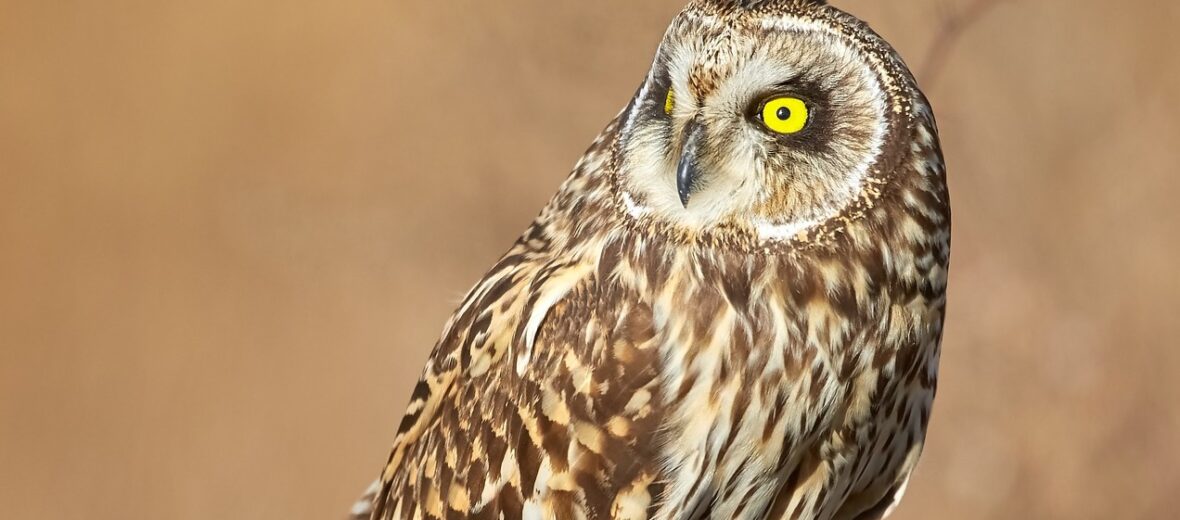
One of the world’s most widely distributed owl species, the short-eared owl can be found on every continent, sans Australia and Antarctica. They prefer to inhabit dunes, grasslands, heathlands, agricultural areas, savannas, prairies, marshes, meadows, and tundra. With an estimated global population of 2,100,000, these owls are listed as Least Concern. However, they still face the threats of habitat destruction, vehicle strike (being hit by vehicles), pollution, invasive species, and disease.
First the Stats…
Scientific name: Asio flammeus
Weight: Up to 16.8 ounces
Length: Up to 17 inches
Wingspan: Up to 40 inches
Lifespan: Up to 15 years
Now on to the Facts!
1.) Sans the winter months and during breeding season, these owls are solitary.
2.) During the winter these owls will sometimes gather in communal nesting sites. But they still keep their distance from each other.
3.) Although short-eared owls are predominantly cathemeral (active during day and night), they can also exhibit nocturnal (active at night) only patterns.
4.) Short-eared owls tend to fly low to the ground till they find prey, then they swoop down, talons first.
5.) Northern harriers often compete with these owls for prey. The 2 species will also engage in kleptoparasitism (stealing food from 1 another).
But wait, there’s more on the short-eared owl!
6.) Their calls are several and include: a ‘toot-toot-toot-toot-toot’ sound, a raspy ‘waowk, waowk, waowk’ call, a loud ‘eeee-yerp’, and a scratchy bark-like call.
7.) A group or gathering of owls is called a parliament or stare.
Did you know…?
Due to their serrated feathers, their flight is almost totally silent.
8.) Voles, mice, rats, ground squirrels, moles, shrews, bats, muskrats, smaller birds, and insects are all on the menu.
9.) These owls are typically seasonally monogamous (mate with only 1 partner each breeding season.
10.) Short-eared owls are terrestrial nesters (make their nest on the ground). They build the nest with grasses, leaves, and feathers and conceal the nest in or near shrubs.
But wait, there’s more on the short-eared owl!
11.) Females lay up to 11 eggs that hatch in up to 37 days.
12.) Their genus name, flammeus, translates to “flame-colored”.
13.) Like other owls, they are unable to digest bone and other hard body parts, so they will regurgitate what is called a pellet which contains the indigestible parts.
14.) The parents will engage in paratrepsis if a predator nears their nest. This is where 1 or both of the parents will literally fake being injured to draw the attention of the predator away from the nest.
15.) Bald Eagles, gyrfalcons, red-tailed hawks, northern Goshawks, snowy owls, skunks, cats, dogs, foxes, coyotes all prey on these owls. Jaegers, gulls, ravens, and crows steal eggs and young chicks.
Now a Short Short-Eared Owl Video!
Be sure to share & comment below! Also, check out the Critter Science YouTube channel. Videos added frequently!
Want to suggest a critter for me to write about? Let me know here.




Leave a Reply